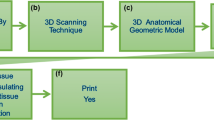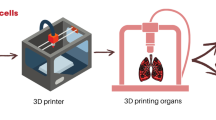Abstract
Pancreatic transplantation remains the only cure for diabetes, but the shortage of donors limits its clinical application. Whole organ decellularized scaffolds offer a new opportunity for pancreatic organ regeneration; however inadequate endothelialization and vascularization can prevent sufficient transport of oxygen and nutrient supplies to the transplanted organ, as well as leading unwanted thrombotic events. In the present study, we explored the re-endothelialization of rat pancreatic acellular scaffolds via circulation perfusion using human skin fibroblasts (FBs) and human umbilical vein endothelial cells (HUVECs). Our results revealed that the cell adhesion rate when these cells were co-cultured was higher than under control conditions, and this increase was associated with increased release of growth factors including VEGF, FGFb, EGF, and IGF-1 as measured by ELISA. When these recellularized organs were implanted in vivo for 28 days in rat dorsal subcutaneous pockets, we found that de novo vasculature formation in the co-culture samples was superior to the control samples. Together these results suggest that endothelial cell and FB co-culture enhances the re-endothelialization and vascularization of pancreatic acellular scaffolds.







Similar content being viewed by others
References
Muoio DM, Newgard CB. Mechanisms of disease: molecular and metabolic mechanisms of insulin resistance and beta-cell failure in type 2 diabetes. Nat Rev Mol cell Biol. 2008;9(3):193–205. https://doi.org/10.1038/nrm2327
Weng J, Li Y, Xu W, Shi L, Zhang Q, Zhu D, et al. Effect of intensive insulin therapy on beta-cell function and glycaemic control in patients with newly diagnosed type 2 diabetes: a multicentre randomised parallel-group trial. Lancet. 2008;371(9626):1753–1760. https://doi.org/10.1016/S0140-6736(08)60762-X
Cescon M, DeSalvo DJ, Ly TT, Maahs DM, Messer LH, Buckingham BA, et al. Early detection of infusion set failure during insulin pump therapy in type 1 diabetes. J diabetes Sci Technol. 2016;10(6):1268–1276. https://doi.org/10.1177/1932296816663962
Wolfsdorf J, Glaser N, Sperling MA. American diabetes A. diabetic ketoacidosis in infants, children, and adolescents: a consensus statement from the American Diabetes Association. Diabetes care. 2006;29(5):1150–1159. https://doi.org/10.2337/diacare.2951150
Dean PG, Kukla A, Stegall MD, Kudva YC. Pancreas transplantation. BMJ. 2017;357:j1321 https://doi.org/10.1136/bmj.j1321
Gruessner AC, Gruessner RWG. Pancreas transplantation for patients with type 1 and type 2 Diabetes Mellitus in the United States: a registry report. Gastroenterol Clin North Am. 2018;47(2):417–441. https://doi.org/10.1016/j.gtc.2018.01.009
Dunn TB. Life after pancreas transplantation: reversal of diabetic lesions. Curr Opin organ Transplant. 2014;19(1):73–79. https://doi.org/10.1097/MOT.0000000000000045
Lombardo C, Perrone VG, Amorese G, Vistoli F, Baronti W, Marchetti P, et al. Update on pancreatic transplantation on the management of diabetes. Minerva Med. 2017;108(5):405–418. https://doi.org/10.23736/S0026-4806.17.05224-7
Huang YB, Mei J, Yu Y, Ding Y, Xia W, Yue T, et al. Comparative decellularization and recellularization of normal versus streptozotocin-induced diabetes mellitus rat pancreas. Artif Organs. 2018. https://doi.org/10.1111/aor.13353
Peloso A, Urbani L, Cravedi P, Katari R, Maghsoudlou P, Fallas ME, et al. The human pancreas as a source of protolerogenic extracellular matrix scaffold for a new-generation bioartificial endocrine pancreas. Ann Surg. 2016;264(1):169–179. https://doi.org/10.1097/SLA.0000000000001364
Orlando G, Wood KJ, Soker S, Stratta RJ. How regenerative medicine may contribute to the achievement of an immunosuppression-free state. Transplantation. 2011;92(8):e36–e38. https://doi.org/10.1097/TP.0b013e31822f59d8. author reply e9
Ott HC, Clippinger B, Conrad C, Schuetz C, Pomerantseva I, Ikonomou L, et al. Regeneration and orthotopic transplantation of a bioartificial lung. Nat Med. 2010;16(8):927–933. https://doi.org/10.1038/nm.2193
Lorvellec M, Scottoni F, Crowley C, Fiadeiro R, Maghsoudlou P, Pellegata AF, et al. Mouse decellularised liver scaffold improves human embryonic and induced pluripotent stem cells differentiation into hepatocyte-like cells. PLoS ONE. 2017;12(12):e0189586 https://doi.org/10.1371/journal.pone.0189586
Crapo PM, Gilbert TW, Badylak SF. An overview of tissue and whole organ decellularization processes. Biomaterials. 2011;32(12):3233–3243. https://doi.org/10.1016/j.biomaterials.2011.01.057
Maghsoudlou P, Georgiades F, Smith H, Milan A, Shangaris P, Urbani L, et al. Optimization of liver decellularization maintains extracellular matrix micro-architecture and composition predisposing to effective cell seeding. PLoS ONE. 2016;11(5):e0155324 https://doi.org/10.1371/journal.pone.0155324
Goh SK, Bertera S, Olsen P, Candiello JE, Halfter W, Uechi G, et al. Perfusion-decellularized pancreas as a natural 3D scaffold for pancreatic tissue and whole organ engineering. Biomaterials. 2013;34(28):6760–6772. https://doi.org/10.1016/j.biomaterials.2013.05.066
Yu H, Chen Y, Kong H, He Q, Sun H, Bhugul PA, et al. The rat pancreatic body tail as a source of a novel extracellular matrix scaffold for endocrine pancreas bioengineering. J Biol Eng. 2018;12:6 https://doi.org/10.1186/s13036-018-0096-5
Devalliere J, Chen Y, Dooley K, Yarmush ML, Uygun BE. Improving functional re-endothelialization of acellular liver scaffold using REDV cell-binding domain. Acta Biomater. 2018;78:151–164. https://doi.org/10.1016/j.actbio.2018.07.046
Risau W, Flamme I. Vasculogenesis. Annu Rev cell Dev Biol. 1995;11:73–91. https://doi.org/10.1146/annurev.cb.11.110195.000445
Risau W. Mechanisms of angiogenesis. Nature. 1997;386(6626):671–674. https://doi.org/10.1038/386671a0
Patan S. Vasculogenesis and angiogenesis as mechanisms of vascular network formation, growth and remodeling. J neuro-Oncol. 2000;50(1–2):1–15.
Kutcher ME, Herman IM. The pericyte: cellular regulator of microvascular blood flow. Microvasc Res. 2009;77(3):235–246. https://doi.org/10.1016/j.mvr.2009.01.007
Tiruvannamalai Annamalai R, Rioja AY, Putnam AJ, Stegemann JP. Vascular network formation by human microvascular endothelial cells in modular fibrin microtissues. ACS Biomater Sci Eng. 2016;2(11):1914–1925. https://doi.org/10.1021/acsbiomaterials.6b00274
Kniazeva E, Kachgal S, Putnam AJ. Effects of extracellular matrix density and mesenchymal stem cells on neovascularization in vivo. Tissue Eng Part A. 2011;17(7–8):905–914. https://doi.org/10.1089/ten.TEA.2010.0275
Hegen A, Blois A, Tiron CE, Hellesoy M, Micklem DR, Nor JE, et al. Efficient in vivo vascularization of tissue-engineering scaffolds. J tissue Eng Regen Med. 2011;5(4):e52–e62. https://doi.org/10.1002/term.336
Samal J, Weinandy S, Weinandy A, Helmedag M, Rongen L, Hermanns-Sachweh B, et al. Co-culture of human endothelial cells and foreskin fibroblasts on 3d silk-fibrin scaffolds supports vascularization. Macromol Biosci. 2015;15(10):1433–1446. https://doi.org/10.1002/mabi.201500054
Xu L, Guo Y, Huang Y, Xiong Y, Xu Y, Li X, et al. Constructing heparin-modified pancreatic decellularized scaffold to improve its re-endothelialization. J Biomater Appl. 2018;32(8):1063–1070. https://doi.org/10.1177/0885328217752859
Bos EJ, van der Laan K, Helder MN, Mullender MG, Iannuzzi D, van Zuijlen PP. Noninvasive measurement of ear cartilage elasticity on the cellular level: a new method to provide biomechanical information for tissue engineering. Plast Reconstr Surg Glob open. 2017;5(2):e1147. https://doi.org/10.1097/GOX.0000000000001147
Uygun BE, Soto-Gutierrez A, Yagi H, Izamis ML, Guzzardi MA, Shulman C, et al. Organ reengineering through development of a transplantable recellularized liver graft using decellularized liver matrix. Nat Med. 2010;16(7):814–820. https://doi.org/10.1038/nm.2170
Marinval N, Morenc M, Labour MN, Samotus A, Mzyk A, Ollivier V, et al. Fucoidan/VEGF-based surface modification of decellularized pulmonary heart valve improves the antithrombotic and re-endothelialization potential of bioprostheses. Biomaterials. 2018;172:14–29. https://doi.org/10.1016/j.biomaterials.2018.01.054
Ko IK, Peng L, Peloso A, Smith CJ, Dhal A, Deegan DB, et al. Bioengineered transplantable porcine livers with re-endothelialized vasculature. Biomaterials. 2015;40:72–79. https://doi.org/10.1016/j.biomaterials.2014.11.027
Sorrell JM, Caplan AI. Fibroblasts-a diverse population at the center of it all. Int Rev cell Mol Biol. 2009;276:161–214. https://doi.org/10.1016/S1937-6448(09)76004-6
Cappellesso-Fleury S, Puissant-Lubrano B, Apoil PA, Titeux M, Winterton P, Casteilla L, et al. Human fibroblasts share immunosuppressive properties with bone marrow mesenchymal stem cells. J Clin Immunol. 2010;30(4):607–619. https://doi.org/10.1007/s10875-010-9415-4
Perez-Basterrechea M, Esteban MM, Vega JA, Obaya AJ. Tissue-engineering approaches in pancreatic islet transplantation. Biotechnol Bioeng. 2018;115(12):3009–3029. https://doi.org/10.1002/bit.26821
Bhakuni T, Ali MF, Ahmad I, Bano S, Ansari S, Jairajpuri MA. Role of heparin and non heparin binding serpins in coagulation and angiogenesis: a complex interplay. Arch Biochem Biophys. 2016;604:128–142. https://doi.org/10.1016/j.abb.2016.06.018
Asahara T, Bauters C, Zheng LP, Takeshita S, Bunting S, Ferrara N, et al. Synergistic effect of vascular endothelial growth factor and basic fibroblast growth factor on angiogenesis in vivo. Circulation. 1995;92(9 Suppl):II365–II371
Volz AC, Huber B, Schwandt AM, Kluger PJ. EGF and hydrocortisone as critical factors for the co-culture of adipogenic differentiated ASCs and endothelial cells. Differ; Res Biol Divers. 2017;95:21–30. https://doi.org/10.1016/j.diff.2017.01.002
Mehta VB, Besner GE. HB-EGF promotes angiogenesis in endothelial cells via PI3-kinase and MAPK signaling pathways. Growth factors. 2007;25(4):253–263. https://doi.org/10.1080/08977190701773070
Nicosia RF, Nicosia SV, Smith M. Vascular endothelial growth factor, platelet-derived growth factor, and insulin-like growth factor-1 promote rat aortic angiogenesis in vitro. Am J Pathol. 1994;145(5):1023–1029
Wang C, Li Y, Yang M, Zou Y, Liu H, Liang Z, et al. Efficient differentiation of bone marrow mesenchymal stem cells into endothelial cells in vitro. Eur J Vasc Endovasc. 2018;55(2):257–265. https://doi.org/10.1016/j.ejvs.2017.10.012
Mirmalek-Sani SH, Orlando G, McQuilling JP, Pareta R, Mack DL, Salvatori M, et al. Porcine pancreas extracellular matrix as a platform for endocrine pancreas bioengineering. Biomaterials. 2013;34(22):5488–5495. https://doi.org/10.1016/j.biomaterials.2013.03.054
Acknowledgements
This research was supported by the National Key Research and Development Program of China (Grant no. 2018YFC1105603, 2017YFA0701304) and the National Natural Science Foundation of China (Grant no. 31830028, 81671823, 81471801), Science and Technology Project of Nantong City (MS12018077).
Author contributions
The authors thank Lu Jingjing at Research Center of Clinical Medicine, Affiliated Hospital of Nantong University, for technical help with H&E staining and microscopy. XL and HY contributed to study design, data acquisition and article writing. WZ and ZS contributed to data interpretation and article editing. WD designed the research and edited the article. YY and GY contributed to study design, article editing and funding acquisition. XL and GY are the guarantors of this work, had full access to all the data in the study, and take responsibility for the data and the accuracy of the data analysis. All authors have approved the final version of the article.
Author information
Authors and Affiliations
Corresponding authors
Ethics declarations
Compliance with ethical standards
All animal procedures were performed according to institutional and national guidelines and approved by the Animal Care Ethics Committee of Nantong University.
Conflict of interest
The authors declare that they have no conflict of interest.
Additional information
Publisher’s note: Springer Nature remains neutral with regard to jurisdictional claims in published maps and institutional affiliations.
Rights and permissions
About this article
Cite this article
Xu, L., Huang, Y., Wang, D. et al. Reseeding endothelial cells with fibroblasts to improve the re-endothelialization of pancreatic acellular scaffolds. J Mater Sci: Mater Med 30, 85 (2019). https://doi.org/10.1007/s10856-019-6287-x
Received:
Accepted:
Published:
DOI: https://doi.org/10.1007/s10856-019-6287-x




